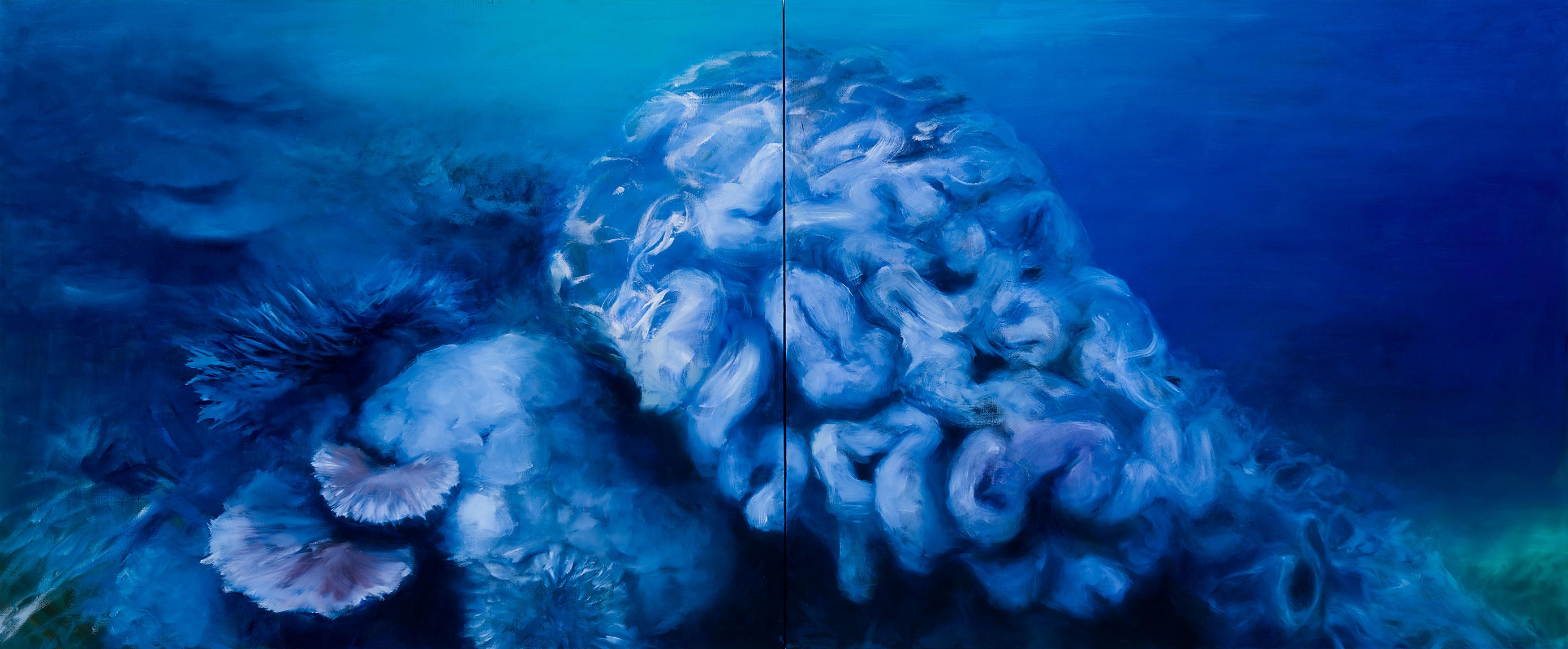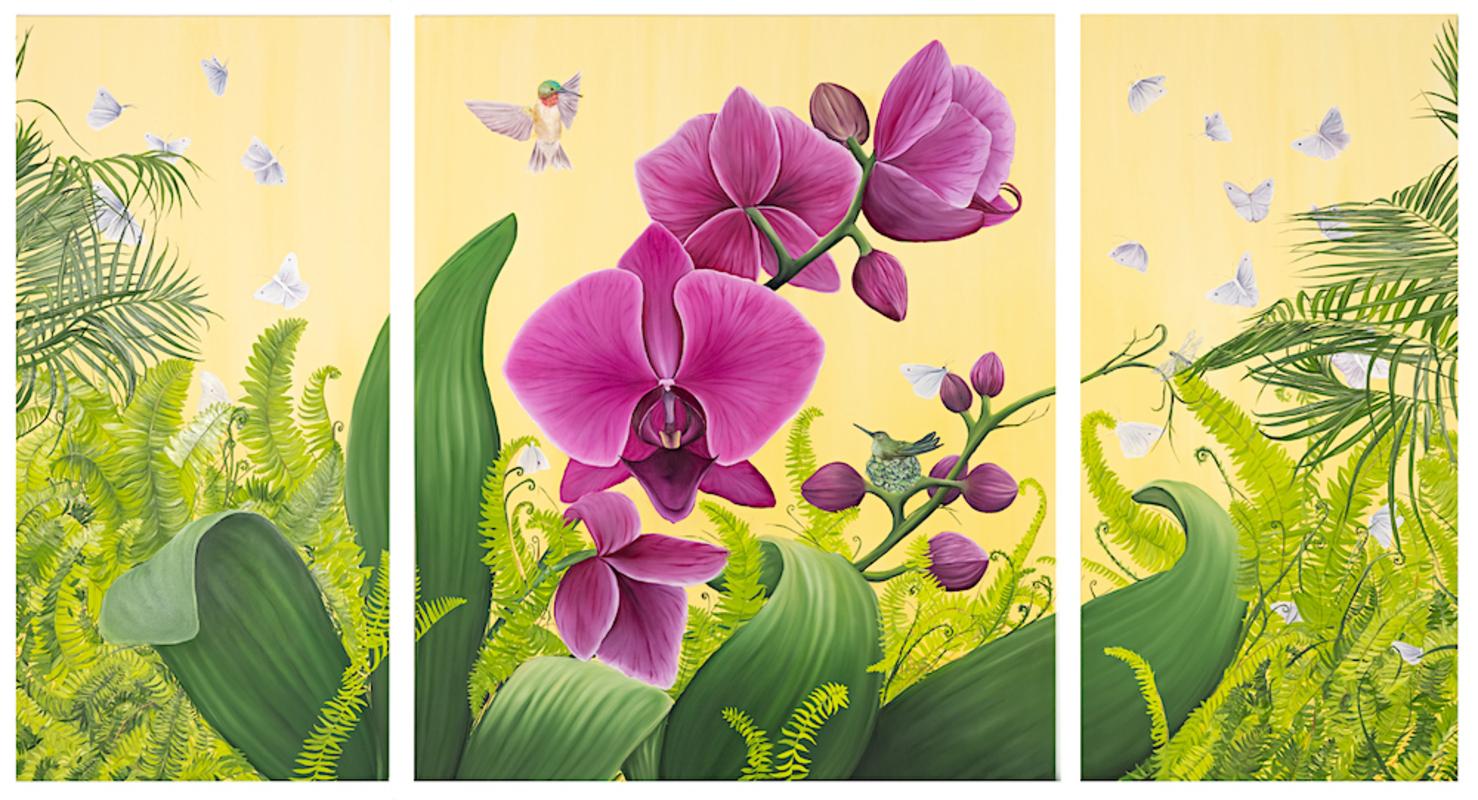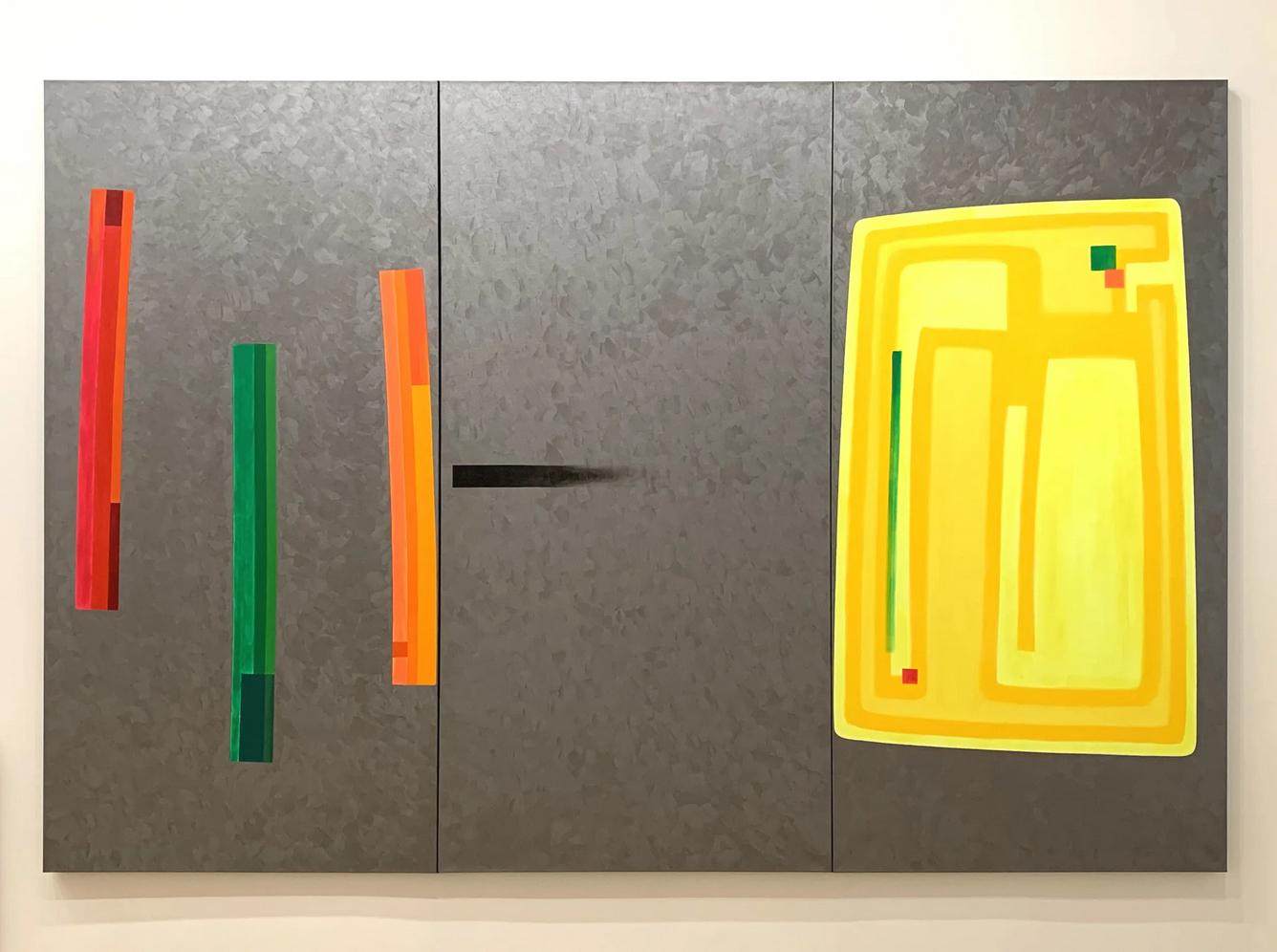Items Similar to Virgin of Guadalupe
Want more images or videos?
Request additional images or videos from the seller
1 of 2
José de la CruzVirgin of Guadalupe1788
1788
About the Item
Signed and dated, lower right, Joseph de la Cruz f.t / Año de 88.
Provenance: Private Collection, Santo Stefano d’Aveto (Genoa), ca. 1960–2022.
This monumental canvas is a rare, signed example of one of the most popular subjects of Spanish Colonial, and particularly Mexican, painting: the Virgin of Guadalupe. Paintings of the Virgin of Guadalupe record the 1531 vision of Juan Diego, a Chichimec peasant and Christian convert at Guadalupe, just outside of Mexico City. According to the legend, the Virgin Mary appeared as a young dark-skinned woman to Juan Diego Cuauhtlatoatzin (his full name) and spoke to him in his native Nahuatl tongue. The cult of the Virgin of Guadalupe spread rapidly in the New World, particularly among the population of recently converted indigenous people. That the Virgin spoke in a local language and had dark skin was viewed as confirming the spiritual worthiness of indigenous Americans and underscoring the universality of Christianity. Today the Virgin of Guadalupe is venerated worldwide. Our painting is a rare signed and dated version by José de la Cruz, an artist active in Mexico in the late 18th century about whom little is known. José de la Cruz is known to have painted large-scale images of the Virgin of Guadalupe for export. Other examples by him are recorded in Seville and the Canary Islands; our painting in fact comes from the Ligurian town of Santo Stefano d’Aveto, Italy, which has long had a special devotion to the Virgin of Guadalupe.
According to the legend, in December 1531, shortly after the conquest of Mexico, Juan Diego heard a voice calling out his name while on his way to mass in a church outside Mexico City. A young dark-skinned woman appeared before him and told him that she was the mother of God and directed him to visit the bishop of Mexico, Juan de Zumárraga, to ask that a church be built in her honor on the hill of Tepeyac, the site of a former temple of the Aztec goddess Tonantzin. Juan Diego approached the bishop twice, but he required proof of this miraculous encounter. Juan Diego returned to the hill of Tepeyac and petitioned the Virgin for assistance. She reappeared and instructed him to pick the Castillian roses that were in full bloom on the hilltop (which had bloomed despite its being winter) and to return to the bishop. Juan Diego gathered the flowers in his tilmàtli—a type of native garment worn as a mantle. When Juan Diego returned to the bishop and opened his tilmàtli, he revealed the now universally recognizable standing figure of the Virgin imprinted on the fabric. This convinced the bishop of the miracle and led to the construction of a chapel on the site. The image of the Virgin that miraculously appeared on the tilmàtli, which still survives in a church on Tepeyac, served as the basis for all subsequent depictions of Virgin of Guadalupe.
The cult of the Virgin of Guadalupe became very popular among the indigenous population. Already by the mid-17th century the Virgin of Guadalupe was closely associated with Mexico and its people, and the image has remained culturally significant to the present day. In the year 1746, the Virgin was declared the patroness of the Viceroyalty of New Spain, and the image proliferated across Latin America, even making its way back to Europe as the cult of the became increasingly popular. Pope Benedict XIV approved the Office and Mass of the Virgin of Guadalupe in 1754, further cementing the legacy of the miracle and the image.
The present painting follows a standard type that stems from the original miraculous image. The Virgin appears at center on a half-moon supported by a winged putto. She stands with her proper left leg bent, as if stepping forward, and she looks downwards as she folds her hand in prayer. Her blue mantle is decorated with gold stars, and she is completely surrounded by a gold nimbus. She is surrounded by vignettes illustrating episodes from the legend of her appearance, and vines of soft-pink roses referencing those picked by Juan Diego trail up the outer edges of the painting, connecting the framed vignettes and the text corresponding to each image.
Although very little is known about José de la Cruz, it is possible to piece together some information about his career from the few documented paintings by him that have survived. In 1959, Joaquin Gonzalez Moreno recorded 5 paintings by José de la Cruz in Seville, each depicting the Virgin of Guadalupe on a large scale (measuring roughly 2 x 1 meters) and signed in a similar form to the present work. Three of these examples are dated 1788, as is our painting, while the others are undated. More recently, Patricia Barea Azcón recorded another Virgen of Guadalupe by the artist in the Cathedral of La Laguna on Tenerife (Canary Islands), signed: “Joseph de la Cruz f[eci]t / Año de [17]89.” The presence of a significant number of paintings by José de la Cruz in Seville and in the Canary Islands is a testament to the strong relationship between the Viceroyalty of New Spain and Spain itself during the Colonial period. The ports of the Canary Islands were used as a stopover point by the fleets traveling back and forth across the Atlantic. Those who ventured to New Spain evidently brought back paintings with them on their return to decorate their dwellings or donate them to religious institutions. It seems likely based on the surviving paintings by José de la Cruz that made their way to Europe, including the present painting, that the artist specialized in painting large-scale images of the Virgin of Guadalupe for export. It is no surprise that Seville, a port city from which many set sail for the New World, came to receive a significant number of paintings of the Virgin of Guadalupe by José de la Cruz. Nor is it surprising that the Virgin of Guadalupe found a significant cult following in Liguria, from which many sailors hailed.
- Creator:José de la Cruz (Mexican)
- Creation Year:1788
- Dimensions:Height: 81 in (205.74 cm)Width: 50 in (127 cm)
- Medium:
- Period:
- Condition:
- Gallery Location:New York, NY
- Reference Number:1stDibs: LU10212230162

About the Seller
5.0
Recognized Seller
These prestigious sellers are industry leaders and represent the highest echelon for item quality and design.
Established in 1997
1stDibs seller since 2012
17 sales on 1stDibs
Typical response time: 6 hours
- ShippingRetrieving quote...Ships From: New York, NY
- Return PolicyThis item cannot be returned.
More From This SellerView All
- Madonna and Child with Angels in the CloudsLocated in New York, NYProvenance: Charles H. and Virginia Baldwin, Claremont, Colorado Springs, Colorado ca. 1907-1934; thence by descent until sold in 1949 to: Charles Blevins Davis, Claremont (renamed Trianon), Colorado Springs 1949 -until gifted in 1952 to: The Poor Sisters of Saint Francis, Trianon, Colorado Springs, 1952 until acquired, 1960, by: John W. Metzger, Trianon, renamed as the Trianon School of Fine Arts, Colorado Springs, 1960-1967; when transferred to: The Metzger Family Foundation, Trianon Art Museum, Denver, 1967 - 2004; thence by descent in the Metzger Family until 2015 Exhibited: Trianon Art Museum, Denver (until 2004) The present work is a spectacular jewel-like canvas by Amigoni, rich in delicate pastel colors, most likely a modello for an altarpiece either lost or never painted. In it the Madonna stands firmly upon a cloud in the heavens, her Child resting on a delicate veil further supported by a cloud, as he gently wraps his arm around his mother’s neck. From above angels prepare to lower flowers and a wreath, while other angels and seraphim surrounding the two joyfully cavort. Dr. Annalisa Scarpa, author of the forthcoming monograph on Jacopo Amigoni...Category
18th Century and Earlier Figurative Paintings
MaterialsCanvas, Oil
- Portrait of Laura Keppel, later Lady SouthamptonBy Sir John HoppnerLocated in New York, NYInscribed, upper left: “Miss Laura Keppel” Provenance: Commissioned from the artist and by descent in the Keppel family estate, Lexham Hall, Norfolk, to: Major Bertram William Arnol...Category
18th Century Paintings
MaterialsCanvas, Oil
- Job Cursed by His WifeBy Giovanni Battista LangettiLocated in New York, NYProvenance: Alfred (1883-1961) and Hermine Stiassni (1889-1962), Brno, Czech Republic, by 1925; thence London, 1938-1940; thence Los Angeles, 1940-1962; thence by descent to: Susanne Stiassni Martin and Leonard Martin, San Francisco, until 2005; thence by descent to: Private Collection, California Exhibited: Künstlerhaus, Brünn (Brno), 1925, as by Ribera. “Art of Collecting,” Flint Institute of Art, Flint, Michigan, 23 November 2018 – 6 January 2019. Literature: Alte Meister...Category
1670s Old Masters Paintings
MaterialsCanvas, Oil
- Portrait of a Lady with a ChiqueadorLocated in New York, NYProvenance: Torres Family Collection, Asunción, Paraguay, ca. 1967-2017 While the genre of portraiture flourished in the New World, very few examples of early Spanish colonial portraits have survived to the present day. This remarkable painting is a rare example of female portraiture, depicting a member of the highest echelons of society in Cuzco during the last quarter of the 17th century. Its most distinctive feature is the false beauty mark (called a chiqueador) that the sitter wears on her left temple. Chiqueadores served both a cosmetic and medicinal function. In addition to beautifying their wearers, these silk or velvet pouches often contained medicinal herbs thought to cure headaches. This painting depicts an unidentified lady from the Creole elite in Cuzco. Her formal posture and black costume are both typical of the established conventions of period portraiture and in line with the severe fashion of the Spanish court under the reign of Charles II, which remained current until the 18th century. She is shown in three-quarter profile, her long braids tied with soft pink bows and decorated with quatrefoil flowers, likely made of silver. Her facial features are idealized and rendered with great subtly, particularly in the rosy cheeks. While this portrait lacks the conventional coat of arms or cartouche that identifies the sitter, her high status is made clear by the wealth of jewels and luxury materials present in the painting. She is placed in an interior, set off against the red velvet curtain tied in the middle with a knot on her right, and the table covered with gold-trimmed red velvet cloth at the left. The sitter wears a four-tier pearl necklace with a knot in the center with matching three-tiered pearl bracelets and a cross-shaped earing with three increasingly large pearls. She also has several gold and silver rings on both hands—one holds a pair of silver gloves with red lining and the other is posed on a golden metal box, possibly a jewelry box. The materials of her costume are also of the highest quality, particularly the white lace trim of her wide neckline and circular cuffs. The historical moment in which this painting was produced was particularly rich in commissions of this kind. Following his arrival in Cuzco from Spain in the early 1670’s, bishop Manuel de Mollinedo y Angulo actively promoted the emergence of a distinctive regional school of painting in the city. Additionally, with the increase of wealth and economic prosperity in the New World, portraits quickly became a way for the growing elite class to celebrate their place in society and to preserve their memory. Portraits like this one would have been prominently displayed in a family’s home, perhaps in a dynastic portrait gallery. We are grateful to Professor Luis Eduardo Wuffarden for his assistance cataloguing this painting on the basis of high-resolution images. He has written that “the sober palette of the canvas, the quality of the pigments, the degree of aging, and the craquelure pattern on the painting layer confirm it to be an authentic and representative work of the Cuzco school of painting...Category
17th Century Old Masters Paintings
MaterialsCanvas, Oil
- Head of a Classical Poet (Socrates?)By Pier Francesco MolaLocated in New York, NYProvenance: Possibly Antonio Amici Moretti, Rome, 1690 Roy Clyde Gardner, Union, Mississippi, 1970s until 2004; by whom given to: Mississippi Band of Choctaw Indians, 2004-2010 Lit...Category
17th Century Baroque Paintings
MaterialsCanvas, Oil
- Head of an AngelLocated in New York, NYProcaccini was born in Bologna, but his family moved to Milan when the artist was eleven years old. His artistic education was evidently familial— from his father Ercole and his elder brothers Camillo and Carlo Antonio, all painters—but his career began as a sculptor, and at an early age: his first known commission, a sculpted saint for the Duomo of Milan, came when he was only seventeen years old. Procaccini’s earliest documented painting, the Pietà for the Church of Santa Maria presso San Celso in Milan, was completed by 1604. By this time the artist had made the trip to Parma recorded by his biographers, where he studied Correggio, Mazzola Bedoli, and especially Parmigianino; reflections of their work are apparent throughout Procaccini's career. As Dr. Hugh Brigstocke has recently indicated, the present oil sketch is preparatory for the figure of the angel seen between the heads of the Virgin and St. Charles Borrommeo in Procaccini's altarpiece in the Church of Santa Afra in Brescia (ill. in Il Seicento Lombardo; Catalogo dei dipinti e delle sculture, exh. cat. Milan 1973, no. 98, pl. 113). As such it is the only known oil sketch of Procaccini's that can be directly connected with an extant altarpiece. The finished canvas, The Virgin and Child with Saints Charles Borrommeo and Latino with Angels, remains in the church for which it was painted; it is one of the most significant works of Procaccini's maturity and is generally dated after the artist's trip to Genoa in 1618. The Head of an Angel is an immediate study, no doubt taken from life, but one stylistically suffused with strong echoes of Correggio and Leonardo. Luigi Lanzi, writing of the completed altarpiece in 1796, specifically commented on Procaccini's indebtedness to Correggio (as well as the expressions of the angels) here: “Di Giulio Cesare...Category
17th Century Old Masters Figurative Paintings
MaterialsPaper, Canvas, Oil
You May Also Like
- "Ebbing Reef" Corals, Large Scale Contemporary Seascape Oil Painting (deep blue)By Karen MarstonLocated in New York, NY60"x144" large scale painting, oil on canvas, created on two joined canvases. The deep blue palette gives a sense of underwater space in this grand depiction of coral reefs. Artist, Karen Marston presents this endangered species in a grand scale to show its beauty and importance to our environment. Karen Marston is a painter living and working in Brooklyn, NY. Her work has been seen in a number of solo exhibitions in New York City. In addition to her 2018 show Harbingers, at the Owen James Gallery in Soho, other recent solos include: 2017’s To Embrace the Whole Sky with the Mind, at Station Independent Projects on the Lower East Side, Demeter’s Wrath in 2016 at the Owen James Gallery and Storm Watch...Category
2010s Contemporary Landscape Paintings
MaterialsOil, Canvas
- Malia's Garden, botanical, floral, green and pink oil paintingBy Allison GreenLocated in New York, NYAllison Green was born in Philadelphia and grew up in a nearby rural suburb. Throughout her childhood Green lived on the periphery of a lush forest, an e...Category
2010s Contemporary Paintings
MaterialsOil, Canvas
- OriginsBy Osvaldo MariscottiLocated in New York, NYOrigins, 2020 Oil on canvas (3 panels) 72 x 108 x 1 1/2 inches, overall Signed and dated, verso leftmost panelCategory
2010s Abstract Abstract Paintings
MaterialsCanvas, Oil
- Sonata 23 TriptychBy Osvaldo MariscottiLocated in New York, NYSonata 23 Triptych 2017 Oil on canvas (3 panels) 48 x 120 x 1 1/2 inches, overall Signed and dated, versoCategory
2010s Abstract Geometric Abstract Paintings
MaterialsCanvas, Oil
- Color Symphony 49 TriptychBy Osvaldo MariscottiLocated in New York, NYColor Symphony 49 Triptych, 2016 Oil on canvas (3 panels) 72 x 120 x 1 1/2 inches, overall Signed and dated, verso leftmost panelCategory
2010s Abstract Abstract Paintings
MaterialsCanvas, Oil
- Diving for PearlsLocated in New York, NYDiving for Pearls, 1986 Oil on canvas 88 x 76 in. (223.5 x 193 cm) Signed, dated, and titled, versoCategory
1980s Abstract Expressionist Abstract Paintings
MaterialsCanvas, Oil
Recently Viewed
View AllMore Ways To Browse
Antique Rose Fabric
Antique Rose Fabrics
Long Mantle
Mass Church
Spanish Canvas 18th
Oil Painting Of Virgin Mary
Spanish Canvas 17th
Santos Figure
Mid Century Oil Painting Diego
Mexican Santos Painting
Religious Christian Paintings
Seville Oil
Seville Oil Painting
2 Piece Step Back
Large Virgin Mary
Spanish Colonial Oil
Original Oil 18th Still
Seville Antique





